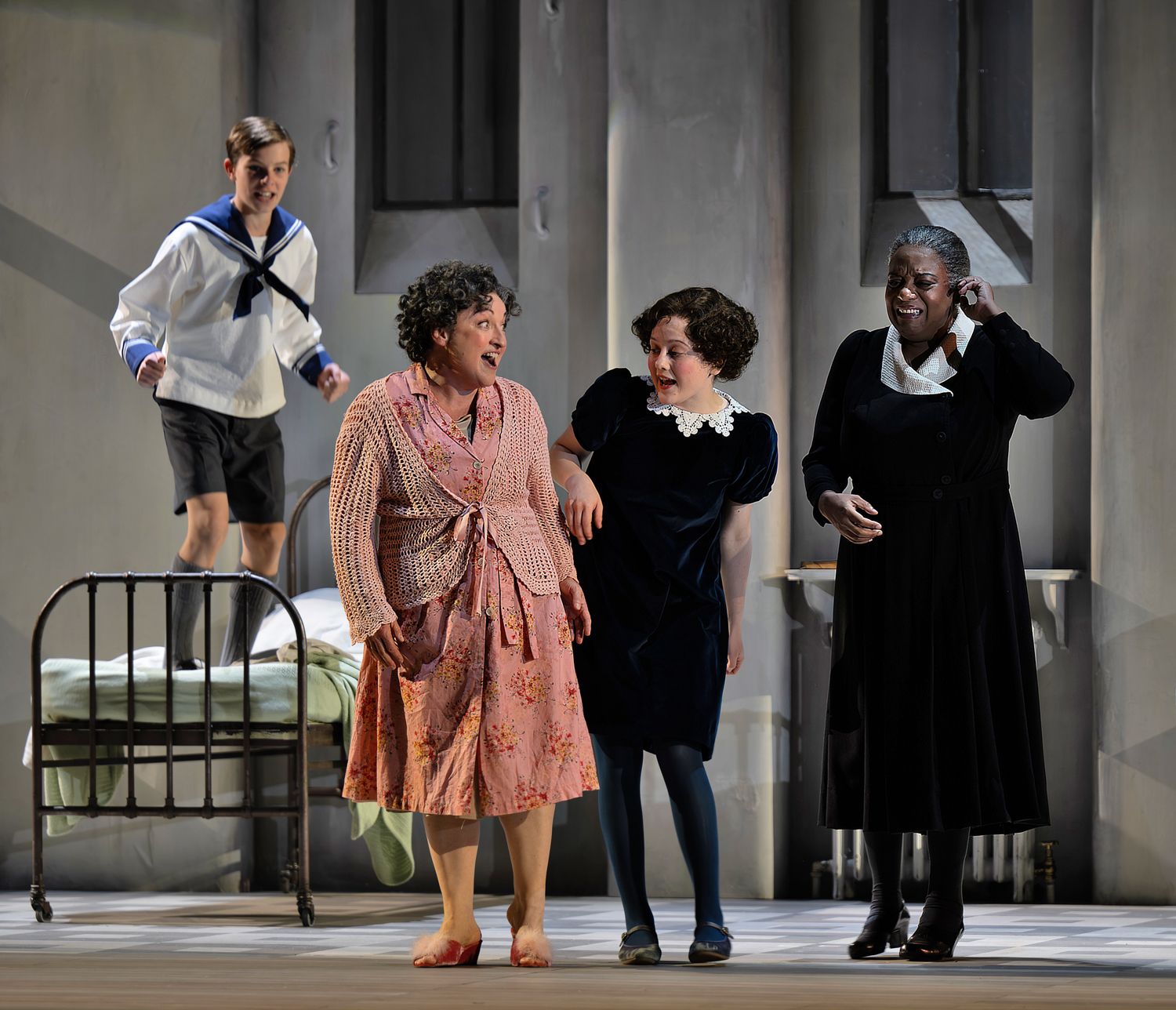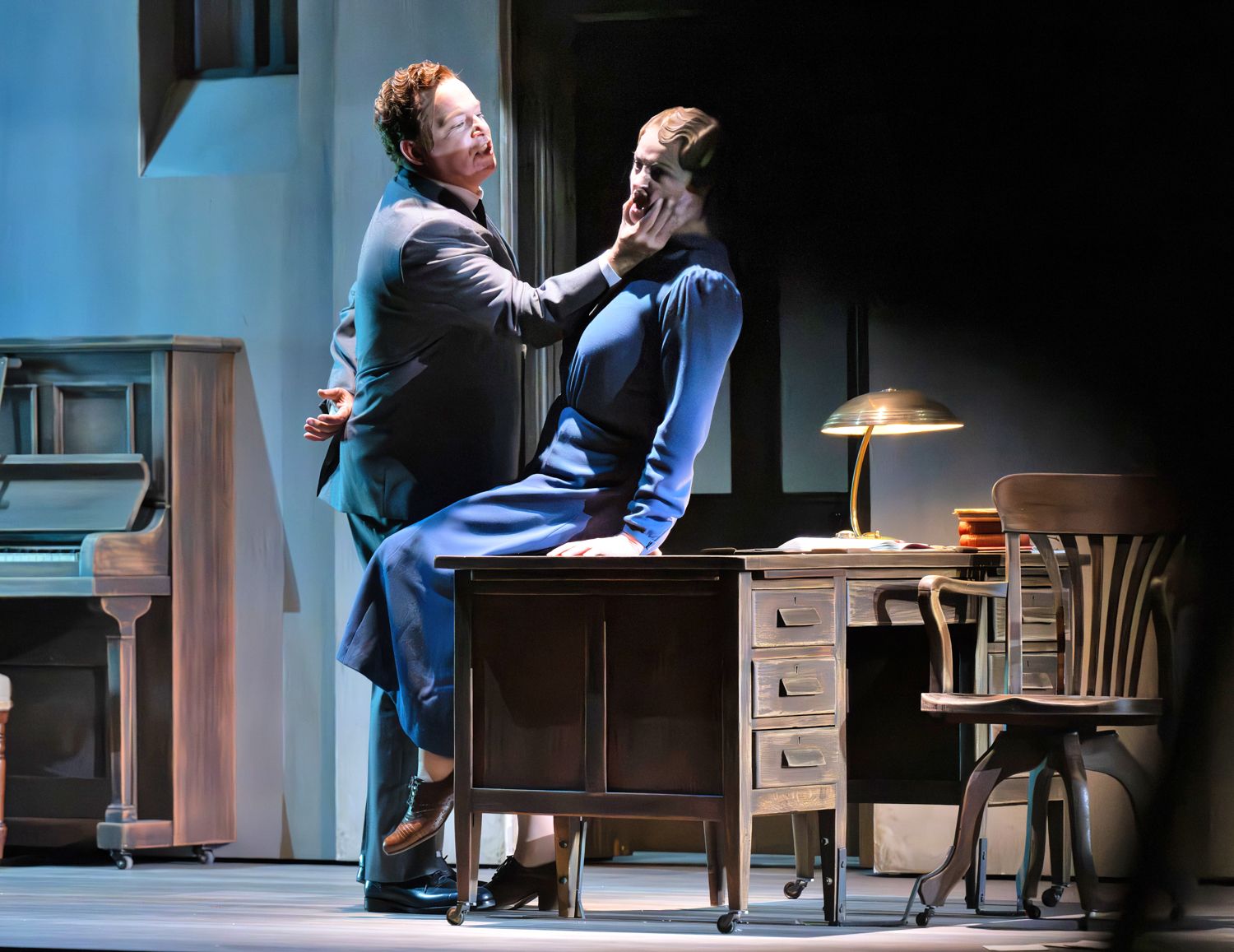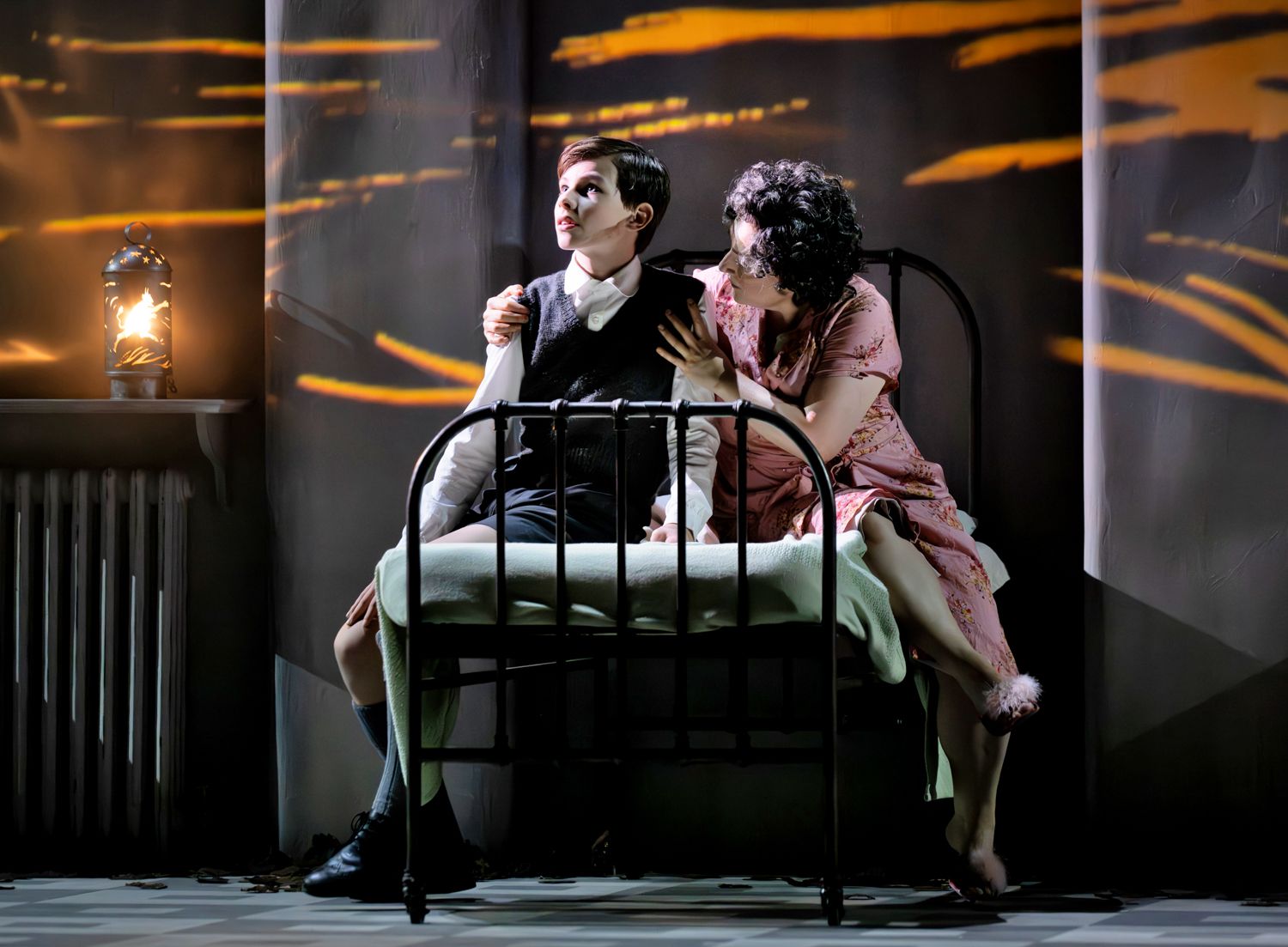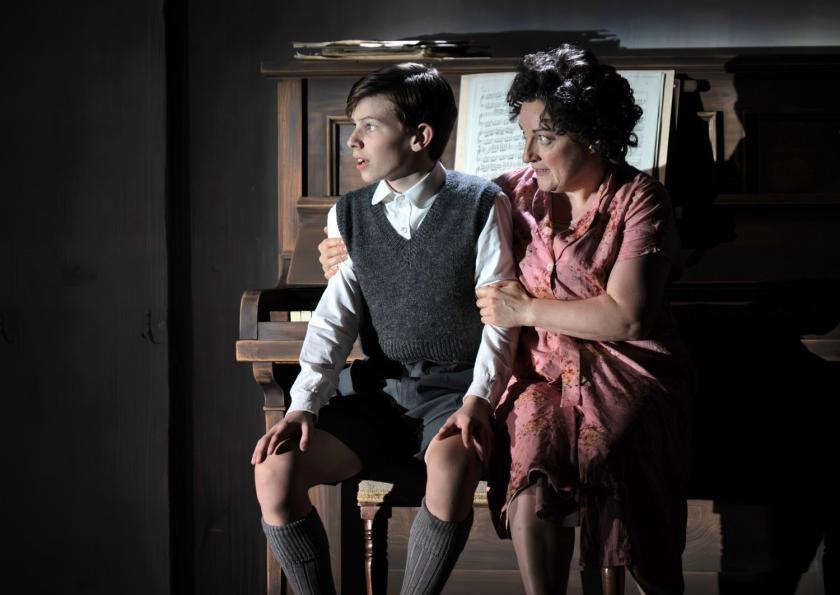At first, you wonder if the peculiar voice of Henry James’s maybe unreliable narrator can be preserved in this production. Surely the outcome is known if we first meet the Governess in an insane asylum bed? Yet whether she was mad or maddened during the course of terrifying events 30 years earlier remains crucially unclear. Between them director/designer Isabella Bywater, soprano Ailish Tynan and conductor Duncan Ward deliver all the frissons in Britten’s concentrated masterpiece.
Bywater shows she knows the novella and the opera equally well in possibly the most intelligent programme essay I've read on the subject. But does thought translate into action, head balance with heart? Unforgettably so, with the screw turning as scarily as I've ever found it. No easy task, you might think, when Britten's radical chamber opera is played out on a big stage in a huge theatre. But when everyone involved fine tunes the details, it works. Graham Vick managed it in the London Coliseum with the first of the composer's smaller-scale experiments, The Rape of Lucretia, decades back, and on reflection - at the time you're perhaps too concerned with whether Bywater can carry off her concept until she does - this is on that level.  First clear signs of success are purely musical. Duncan Ward, who's already proved his worth conducting the London Symphony Orchestra, draws supremely vivid playing from the 13 instrumentalists, attuning us to unease after the Prologue (Alan Oke, crystal clear as the institution's director reading the frame of the case-history to a nurse, unusually a different tenor to the one playing the role of ghost Quint) as percussionist William Lockhart terrorises with those oscillating timpani heartbeats. You're aware of how perfectly Britten writes for every instrument when the execution alternates between razor sharp and atmospheric, violent and barely audible (in a good way), like this. And Ward is as fine a conductor for opera as he is on the concert platform, making sure of total co-ordination with the singers above him.
First clear signs of success are purely musical. Duncan Ward, who's already proved his worth conducting the London Symphony Orchestra, draws supremely vivid playing from the 13 instrumentalists, attuning us to unease after the Prologue (Alan Oke, crystal clear as the institution's director reading the frame of the case-history to a nurse, unusually a different tenor to the one playing the role of ghost Quint) as percussionist William Lockhart terrorises with those oscillating timpani heartbeats. You're aware of how perfectly Britten writes for every instrument when the execution alternates between razor sharp and atmospheric, violent and barely audible (in a good way), like this. And Ward is as fine a conductor for opera as he is on the concert platform, making sure of total co-ordination with the singers above him.
Where has Ailish Tynan (pictured above with Jerry Louth, Victoria Nekhaenko and Gweneth Ann Rand) been all this time as an interpreter of the most vital operatic roles? She last appeared at ENO 14 years ago. We know her as a superb song interpreter, and that's apparent in the way she colours so many of Britten's phrases, themselves so responsive to the nuances of the English language in Myfanwy Piper's James adaptation, which seems to get better with age. You don't worry about whether the ghosts of the former valet Peter Quint and governess Miss Jessel should sing or not when the production places them clearly in the tormented head of the incarcerated former Governess.  Tynan's soprano is not consistently as big as that of Gweneth Ann Rand, perfect as a housekeeper who probably knows more than she tells, but can rise to equal power in the most dramatic lines. As a result, an almost indecent lushness hits us from both singers and orchestra in the orgiastic climaxes near the ends of each act (few in the audience will be aware of them as peak statements of the twelve-note "screw" theme, but this is one of those scores where technical daring and perfection is perfectly matched to musical-dramatic expression).
Tynan's soprano is not consistently as big as that of Gweneth Ann Rand, perfect as a housekeeper who probably knows more than she tells, but can rise to equal power in the most dramatic lines. As a result, an almost indecent lushness hits us from both singers and orchestra in the orgiastic climaxes near the ends of each act (few in the audience will be aware of them as peak statements of the twelve-note "screw" theme, but this is one of those scores where technical daring and perfection is perfectly matched to musical-dramatic expression).
The growing tension, violence even, in this Governess's voice is mirrored by the colloquy of the two ghosts we're to presume she dreams at the beginning of Act Two. Quint must move from seductive to dangerous, and Robert Murray is the ideal singer-actor for that task in a necessarily uncomfortable confrontation with the former Governess, Miss Jessel; ENO-nurtured Eleanor Dennis is also right in looks and tone (Murray and Dennis pictured above). There are two sets of children. Last night Victoria Nekhaenko was the more urgent of the two, which is right given Flora's outbursts of anger at neglect and her mounting terror at a Governess who sees what she clearly doesn't. Jerry Louth keeps Miles a sweet-toned enigma, a fragile adolescent in danger, moving all the same in the gut-wrenching final confrontation with woman and ghost, where Bywater leaves the stage to the two and doesn't indulge in any tricksy concept-stuff: the tragedy must be allowed to register, and it does.  Bywater doesn't overdo it with the kiddy creepiness: the games have subterranean menace only, especially given a sinister large doll, and only once does Miles lash out with a cruel gesture, knocking the medicine cup out of a patient's hand (the past meeting the present). The director/designer's best visual coup, in league with Paul Anderson's adaptable lighting, is to have a rotating motion lamp instead of a candle in Miles' bedroom, projecting illuminated cutouts of devils flying among clouds (pictured above). Jon Driscoll's projection design conjures Bly, its woods and its lake in artistic and atmospheric black and white. So we get the best of both worlds, the 1960s hospital and the country house in the 1930s, with a framework subtly equivalent to James's; this is probably the first Turn of the Screw I've seen with a dramatic equivalent to the past-tense narrative of the novella's Governess. It's all the better for it, a subtle achievement that still applies maximum terror and resonates long after the performance.
Bywater doesn't overdo it with the kiddy creepiness: the games have subterranean menace only, especially given a sinister large doll, and only once does Miles lash out with a cruel gesture, knocking the medicine cup out of a patient's hand (the past meeting the present). The director/designer's best visual coup, in league with Paul Anderson's adaptable lighting, is to have a rotating motion lamp instead of a candle in Miles' bedroom, projecting illuminated cutouts of devils flying among clouds (pictured above). Jon Driscoll's projection design conjures Bly, its woods and its lake in artistic and atmospheric black and white. So we get the best of both worlds, the 1960s hospital and the country house in the 1930s, with a framework subtly equivalent to James's; this is probably the first Turn of the Screw I've seen with a dramatic equivalent to the past-tense narrative of the novella's Governess. It's all the better for it, a subtle achievement that still applies maximum terror and resonates long after the performance.















Add comment